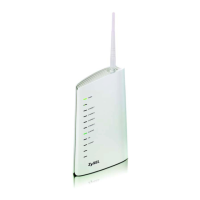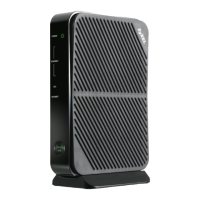Chapter 16 Quality of Service (QoS)
P-870HN-5xb User’s Guide
212
different kinds of traffic can be marked for different kinds of forwarding. Resources
can then be allocated according to the DSCP values and the configured policies.
IP Precedence
Similar to IEEE 802.1p prioritization at layer-2, you can use IP precedence to
prioritize packets in a layer-3 network. IP precedence uses three bits of the eight-
bit ToS (Type of Service) field in the IP header. There are eight classes of services
(ranging from zero to seven) in IP precedence. Zero is the lowest priority level and
seven is the highest.
Automatic Priority Queue Assignment
If you enable QoS on the Device, the Device can automatically base on the IEEE
802.1p priority level, IP precedence and/or packet length to assign priority to
traffic which does not match a class.
The following table shows you the internal layer-2 and layer-3 QoS mapping on
the Device. On the Device, traffic assigned to higher priority queues gets through
faster while traffic in lower index queues is dropped if the network is congested.
Table 76 Internal Layer2 and Layer3 QoS Mapping
PRIORITY
QUEUE
LAYER 2 LAYER 3
IEEE 802.1P
USER PRIORITY
(ETHERNET
PRIORITY)
TOS (IP
PRECEDENCE)
DSCP
IP PACKET
LENGTH (BYTE)
0 1 0 000000
12
2 0 0 000000 >1100
3 3 1 001110
001100
001010
001000
250~1100
4 4 2 010110
010100
010010
010000
5 5 3 011110
011100
011010
011000
<250

